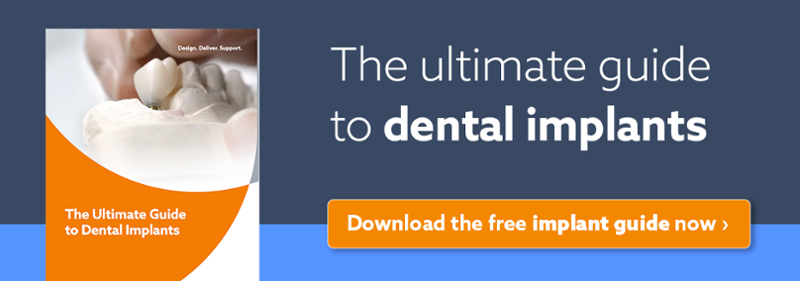Implant dentistry is becoming an increasingly popular treatment choice. In order to achieve a long -term, predictable prognosis, eligible implant patients must have adequate bone volume. Many patients lack sufficient horizontal or vertical bone, but there are various methods that can be used to augment new tissue growth and increase bone volume in these cases. Guided Bone Regeneration (GBR) is a technique that provides space for new bone using barrier membranes. These spaces can then be filled with new, guided bone growth. When used to fill in bone defects with new bone, GBR can provide the best, most predictable results and this technique helps to provide long-term stability to the augmented site.
The concept of GBR was originally introduced many decades ago. Experiments at that time focused on regenerating nerves and tendons. Later, a series of studies showed GBR could predictably provide new bone regeneration and healing of bony deficits around dental implants, thereby increasing the width and height of alveolar bone.

General Principles of GBR
When space is created directly next to a bone surface, new bone can grow in this area. To create this space, a membrane is used to protect the area from the body’s own cells that could otherwise prevent new bone formation. There are many types of membranes that can be used, but it is important that the membrane in use has adequate stiffness to maintain the defect space.
If a resorbable membrane is chosen, it will gradually resorb over several months by which time new and healthy bone will have formed and filled in the deficit. A scaffolding material can be used with a resorbable membrane, ensuring it stays in place to provide a framework for new bone growth. One issue faced with resorbable membranes is the rate of resorption. If the membrane is resorbed too quickly, bone formation could be affected.
Non-resorbable membranes tend to be slightly stiffer than resorbable membranes. This can be desirable in achieving optimal height and width in GBR, however a second surgery will be necessary to remove the membrane. These non-resorbable membranes can be made from titanium mesh or from polytetrafluoroethylene. Titanium mesh is particularly popular because of its mechanical properties, which help to stabilize new bone growth while its rigidity prevents contour collapse.
Effectively chosen membranes will be porous to allow essential nutrients, fluids, bioactive materials and oxygen to pass through, but will also be impermeable to epithelial cells. Pore size is vitally important. A pore size that is too large will permit epithelial cells to overpopulate the space, inhibiting the growth of bone-forming cells. A larger pore size also increases the risk of bacterial contamination. On the other hand, if the pore size is too small, the migration of all cells will be limited.
After GBR, the augmented bone will have a greater volume than before, but gum tissue will remain unchanged. It may be necessary to release the underneath of the gum tissue so it becomes more flexible and can be carefully stretched and stitched over the new bone, without creating too much pressure and tension.
Generally, GBR is a predictable and successful procedure that will regenerate bone within three months or more. It is vital to ensure the deficit does not come under pressure during regeneration. Too much pressure could cause the membrane to collapse, affecting the contour of the newly regenerated area. Patient compliance is also important, as patients must look after the wound during healing and should closely follow all instructions for oral care.
Please be reminded that should you wish to discuss an implant case in more detail, our experienced technical team is here to assist you.
Click here to schedule a consultation with our technical team »
